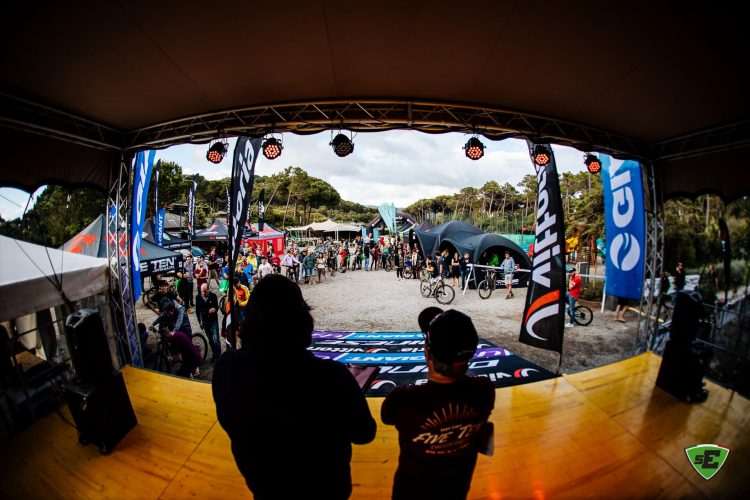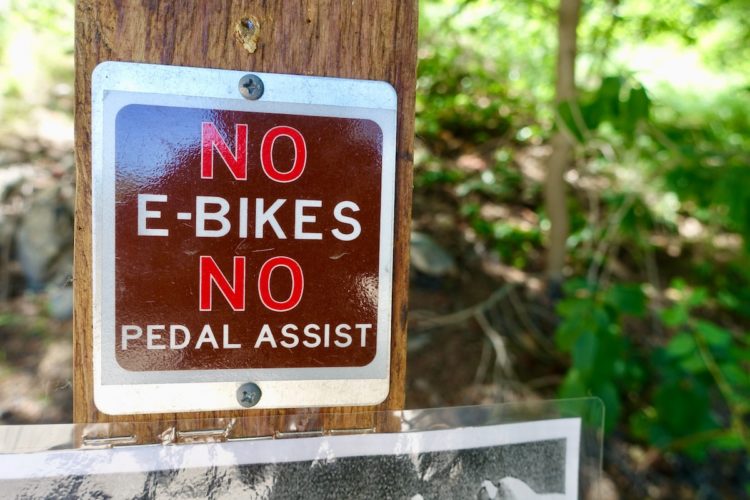
Can we compare apples to other apples? Yes. In fact, there’s a bustling agricultural industry that benefits from the perceived differences between the tart little fruit that litters your neighbor’s lawn and the Honeycrisp or Pink Lady varieties at the supermarket. Do you have a favorite apple? Have you hugged a farmer today?
Every season World Cup and EWS racers chat about how the singletrack in Canada and the U.S. differs from that on the European continent, though rarely is there a clear discussion around how and why the two places offer distinct playing fields for the same sport. I wanted to ask a handful of folks who have spent significant time riding on both continents, to see just how clear and pronounced these trail nuances are.

The first time I visited Europe with my mountain bike was for an 8-day XC stage race across Liguria, Italy, in 2013. I came back to race in the Czech Republic, Poland, and Italy again on two other occasions before deciding to move to the Italian peninsula. It’s safe to say I have an affinity for European singletrack. I also love the trails that I grew up riding in Canada and the U.S., and though singletracks across both landmasses are genuinely unique, one is not better than the other. The differences I sensed are well documented in the words of several other riders I interviewed, so I’ll let them outline the best lines below.

Edoardo Melchiori is the Vice President of IMBA Italia, and conveniently he’s also my neighbor. He’s ridden on both continents, as well as Oceania, and noted that the length of human existence in Europe plays an important role in the way trails formed.
The vast majority of European trails date back decades if not centuries. Over time as paved modern roads were built trails shifted from being used for the purpose of moving people and goods to being abandoned or in some cases dedicated to hiking and only many decades later mountain biking.
Most countries in Europe have a highly anthropized landscape and this means that finding pristine pieces of land without any history (and therefore pre-existing trails) is almost impossible. Due to this, the vast majority of recreational trails are following the marks of old trails that were once used to connect villages, springs, rivers, watch towers and so on. It’s not unusual to spot old stone markers on the side of a trail and older generations might have a lot of interesting stories about armies moving on that same trail during the world wars.
The US (and NZ) have a very different background and a much less concentrated population that allowed the birth of many more purpose built recreational trails which in Europe are mostly only present in bike parks under ski lifts.
Norco Twins Racing cofounder, Caro Gehrig, calls out some of Melchiori’s points from her perspective as an EWS racer based in Switzerland.
The main difference of trails in Europe to North America is that the majority of trails we use for biking are not purposely built bike trails. There is a huge network of hiking trails that is spanned all across Europe that used to be connecters over the alps for trading, smuggling, and simply traveling. Some of these trails have been there for hundreds of years and we’re allowed to ride on pretty much all of them, in Switzerland at least.
A lot of them work great for biking, [though] some are simply too rough or steep. More and more tourism destinations are adapting trails to suit biking better and therefore we have a huge network of amazing trails to ride. Switchbacks are definitely a thing in Europe and it’s almost mandatory to know a thing or two about a back wheel lift to make it around tight turns, but I love our Euro tech! On the other hand, I really like the North American trails because a lot of them are purpose-built MTB trails and they just ride really well “blind”. There are more catch berms etc that make it really fun to ride. I can’t really say if I prefer this or that, it’s the mix of them I guess!

Professional DH racer turned Team Kona enduro boss, Miranda Miller, echoed some of Melchiori’s sentiment, though her vision of the trails moves at a far higher rate of speed than his.
There is always a big difference between the North American rounds and the European rounds when it comes to the style of racing. It has taken me a long time to get used to and is something I’m not even close to mastering yet. In most cases, our trails at home [in North America] are purpose built mountain bike trails. That means the turns have been built up to carry speed through them, larger more awkward obstacles have been removed or turned into features, and the overall average speed of the trail seems to be more consistent.
Many tracks I’ve ridden in Europe are more old paths or hiking trails that have been slightly modified, or sometimes not at all changed to accommodate bikes. This means the turns are more challenging as perhaps they’re tighter, or have obstacles on the inside of them where you want to lean your bike. Often I find the speeds to fluctuate the entire way down, and if you don’t have the skill and power to get back up to the high speed from the low speed to only have to shut it down again, it can be very tiring and challenging. While this year it didn’t work out, I really want to spend some time in my off-season practicing more on this terrain in France or Italy. When riders like Richie or Sam Hill dominate at European rounds in the same style they do in a North American round, I find that very impressive.
Miller also shows top-notch performance on the away tracks, placing tenth at two of the overseas EWS rounds as well as the World Cup DH event in Les Gets France last season.

Former Singletracks editor, Greg Heil, who currently lives in Colorado, recently spent several months traveling around Europe with his mountain bike, and noted some of the same variations in trail styles between the two continents.
To make a broad generalization, the singletrack in Europe tends to be much, much steeper and gnarlier, and also less sustainable, than the trails in North America. It’s also much easier to find bike-optimized or bike-specific trails in North America. Of course, there are outliers on either end of the spectrum on both continents, but this seems to largely hold true.
Since Europe has been home to a dense population for millennia, literally every green space I’ve come across has been riddled with singletrack trails. Very few of these trails were “built.” Rather, most of these trails were walked or ridden in over the course of hundreds if not thousands of years, so consequently, they tend to run in straight lines between point A and point B. Today, Europe is filled with thousands of miles of ancient, eroded fall line trails, and with so many trails to choose from, who really needs to build new ones?
The history of singletrack in North America is the complete opposite. While a few ancient trails can be traced back to the Native Americans, the population density on this side of the Atlantic is still vastly lower. So instead of ancient singletrack spreading throughout every visible green space, even today you can still find vast expanses of untrammeled wilderness where not even a single trail can be found.
To fix this problem, mountain bikers, hikers, and other trail users have taken to building trails, which is often seen as a foreign concept in Europe, unless it’s in a bike park. But riders in North America had to actually build most of their best trails, so they chose to construct trails that were more fun to ride on a bike and, eventually, easier to maintain. And so, the trails here tend to be not as steep and much more sustainable.
I had a chance to pedal with Heil when he was in Finale Ligure last year, which is when some of this discussion about continental trail variation sparked off.

Team Rocky Mountain / Race Face EWS Racer, Jesse Melamed lives in Whistler, Canada year-round, and learned to mountain bike in the dank North Shore loam. Heard of the place?
The difference in trails goes both ways, depending where each person is from. Coming from North America I find most European trails to be awkward and hard to find the flow. It can be put simply that in Europe I find it very hard to ride a trail blind and keep momentum and stoke levels high, whereas in N.A. I can generally find the flow and build my confidence and get going at maximum speed by the end of the first trail in any given area.
As I have raced, and ridden with, many Europeans over the years I have heard them complain about the things I love about my trails and praise the things I dislike about theirs. So I believe it just comes down to what you have grown up riding and are familiar with. I wouldn’t say our trails are better, it’s just a different style. Some of my all time favorite trails are in Europe! I think the main difference is that Europe has a vast framework of old trails to use while we have had to create trails more recently that are then more suited to mountain bikes.

I want to thank these athletes and advocates for sharing their sense of trail variations across the two respective continents. I will doubly echo that the tracks in Europe are notably steeper than most of those I rode in North America, likely thanks to the historical “point A to B” characteristics mentioned above. When I first rode here I recall stopping at the top of multiple pitches and thinking “can I actually ride that?” Fortunately, humans are adaptable, and I now look forward to riding silly fall line tracks.
We’ll leave you with this video of Jesse Melamed sharing the story of his connection with the Whistler dirt.











2 Comments
Jun 7, 2020
Now I live in NY and I am riding trails that were built specifically for MTB. Although they are fun, it looks like I am in an amusement park. I miss the long steeper sections and the integration with the nature. I guess that it is a matter of what you like better, just the MTB experience or the touch of exploring the nature...
Apr 8, 2020